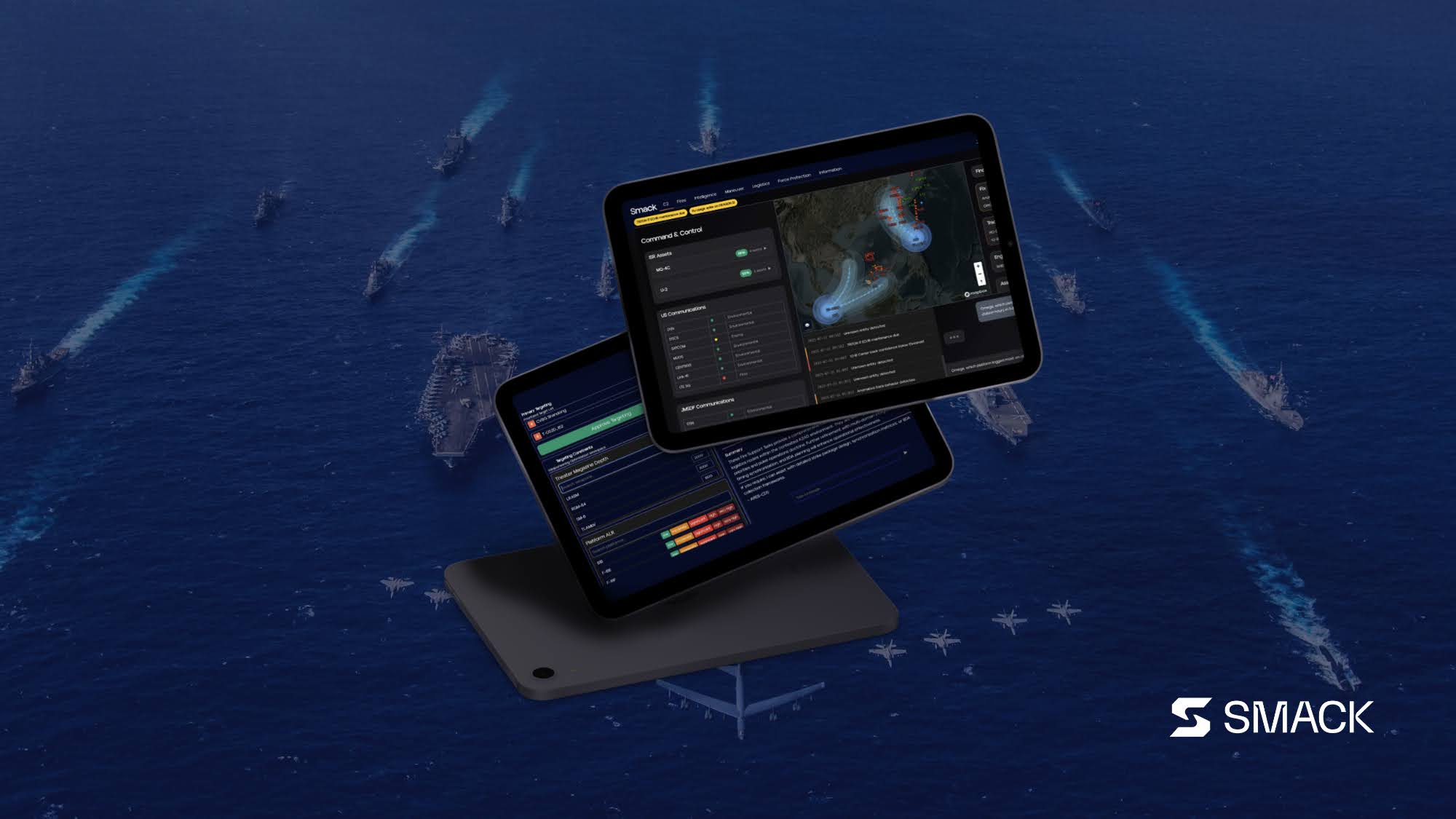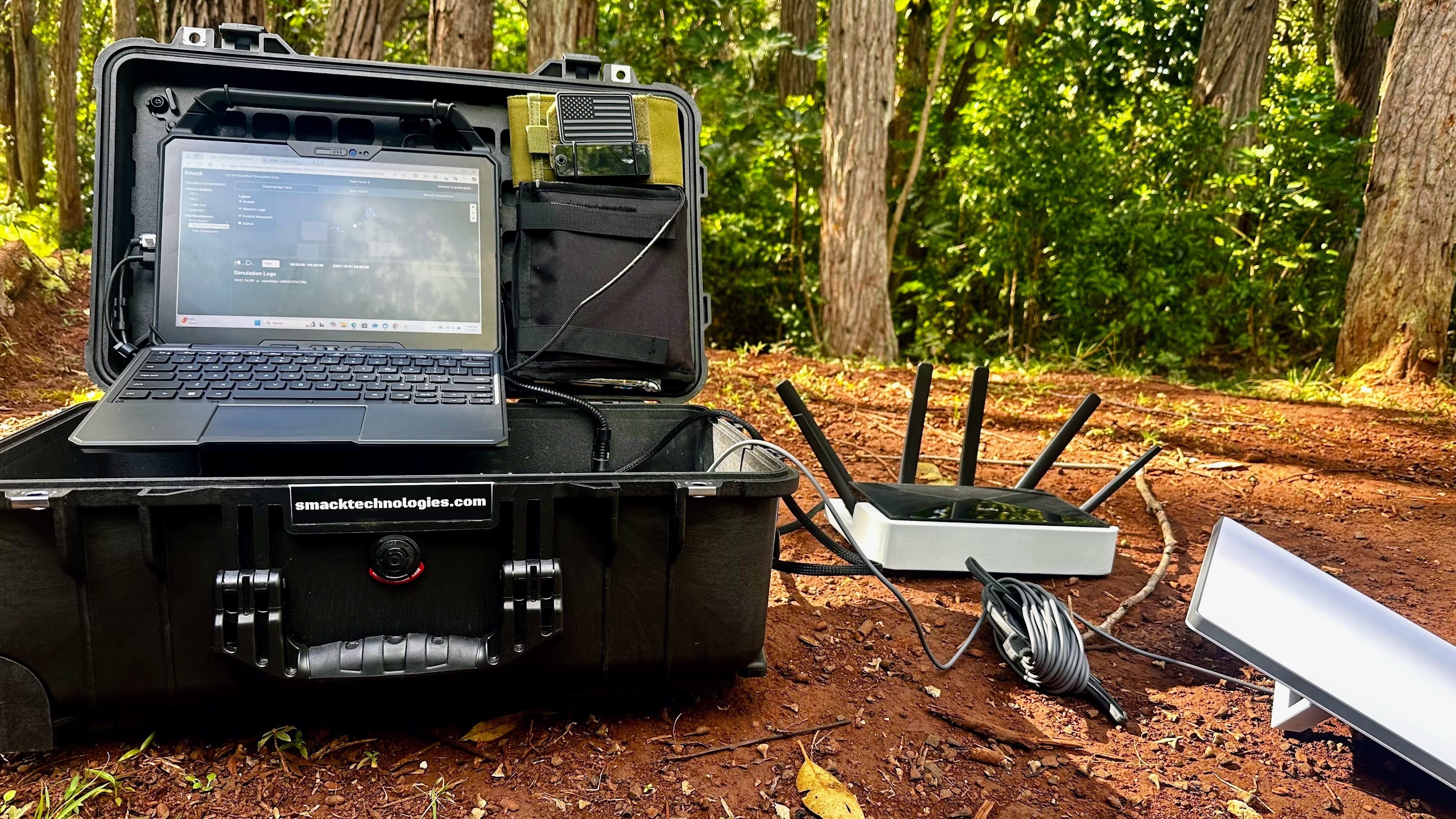Alpha and Omega: Smack’s core product suite that's revolutionizing modern warfare
Smack is building an AI stack to revolutionize decision making in modern warfare, and it starts with our core products: Alpha and Omega.

Smack is building an AI stack to revolutionize decision making in modern warfare.
The goal is simple: process vast amounts of structured and unstructured data—including sensor data—in real time and convert those analyses into the right decisions across the kill chain faster than our adversaries. We call this Decision Dominance.
Unfortunately, while the goal is simple, the execution is not. Achieving Decision Dominance requires, among other things, cutting edge deep-RL and multimodal perception to ingest, analyze, and contextualize multimodal data in real time, a shitload of proprietary datasets and knowledge graphs, and a way to coordinate actions between the command center and warfighters/units at the bleeding edge.
This is where our core products, Alpha and Omega, come in.
Introducing Omega: The Brain for the Kill Chain
Alpha and Omega aren’t another agentic workflow tool: they’re the entire AI orchestration platform for peer-level conflict, specifically designed to bring Decision Dominance to the DoD.
It starts with Omega, our command-level AI stack. Think of it as the brain for the kill chain, powered by Smack's proprietary deep-RL models trained on high-fidelity physics-based simulations.
Omega follows a three-stage decision pipeline: (1) turn broad mission intent into clear objectives; (2) build a detailed plan to execute against those objectives; and (3) display that plan in machine-readable form. Here’s how it works.
First, Omega interprets mission intent using LLMs connected to Smack’s proprietary military knowledge graphs. Once objectives are clear, it synchronizes sensors using reinforcement learning agents powered by state-of-the-art multi-agent algorithms (MADDPG, MAPPO, DTT3, etc.) that excel at learning complex coordination policies and choreographies—teaching distributed systems how to work together, sequence actions optimally, and adapt their collective behavior in dynamic environments.
Omega then continues through fires and effects design, air superiority optimization, logistics handling and virtual rehearsals via dual-tier simulations: a rapid LowFI sim that can test over 10,000 COAs per minute to eliminate bad ideas quickly, and a physics-based, HiFi TacSim that validates plans down to weapon trajectories and terrain effects.
Minutes after first ingesting commander intent, Omega displays a finalized plan in machine-readable formats or as clear operational briefings with visual overlays that can be distributed to appropriate units and platforms. It’s important to note that this represents Omega's current decision logic in key operational areas. Discussions with warfighters, however, increasingly point to the critical need for scalable, AI-enabled decision support across all warfighting functions.
The end result: multi-day pulse planning in minutes, and plan repairs in seconds. But even perfect command-level decisions need coordinated execution at the tactical edge.
Introducing Alpha: Smack’s AI stack for edge units
While Omega enables the right command decisions, Alpha—our AI stack for front line units and platforms—makes those decisions relevant in the larger context of the war by ensuring coordinated execution at the tactical edge.
Alpha deploys lightweight AI agents directly onto individual platforms and units, using Low-Rank Adaptation (LoRA) and Small Language Models (SLMs) derived from Omega's deep-RL brain. Think of it as giving every warfighter and squad leader a compact version of Omega's decision-making intelligence that works even when comms and compute are limited. This fundamentally increases lethality across the entire theater of war through truly distributed and agile command and control.

Alpha's agentic direction enables localized sensing and effecting in concert with end-user requirements, helping to realize the full potential of autonomous systems. It also allows edge units to coordinate sensing and effecting with coalition partners—critical when allies and coalition partners provide up to 60% of combat resources in theater—even in communications-degraded environments. That's because Alpha uses episodic data synchronization through secure, low-bandwidth tactical waveforms to allow units to operate independently for extended periods and receive updates and send feedback when connectivity allows.
Built for Type 1 Encrypted Tactical Communications, Alpha enables even isolated units to make decisions informed by campaign-level equities.
Learn more
This isn’t just talk. Smack has already won prototyping contracts with JFN and MCWL that are expected to go into production in 2025. In fact, we’re the first (and currently only) early-stage startup in JFN.
To learn more about our core products and schedule a demo, visit our Contact page here.

